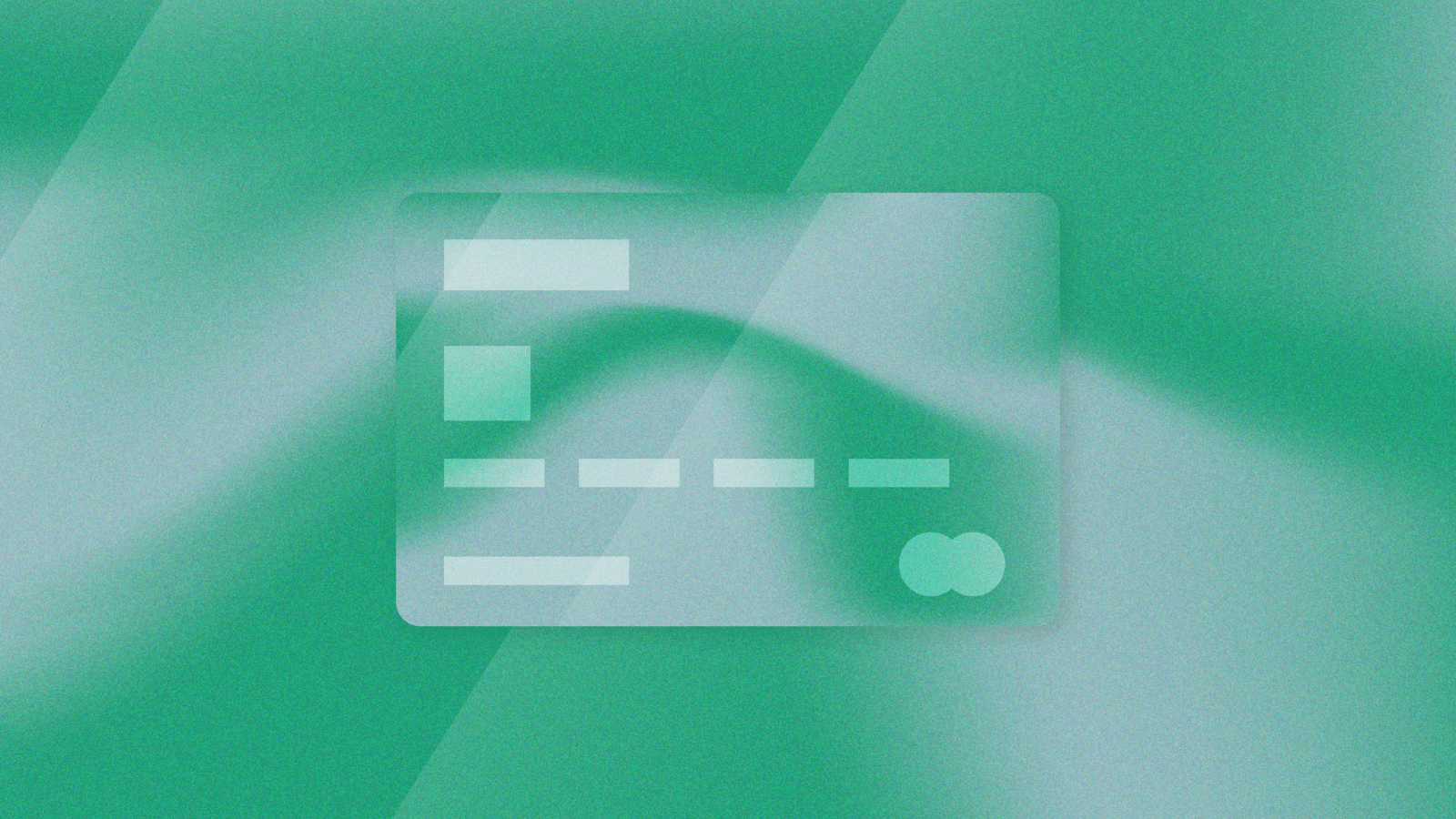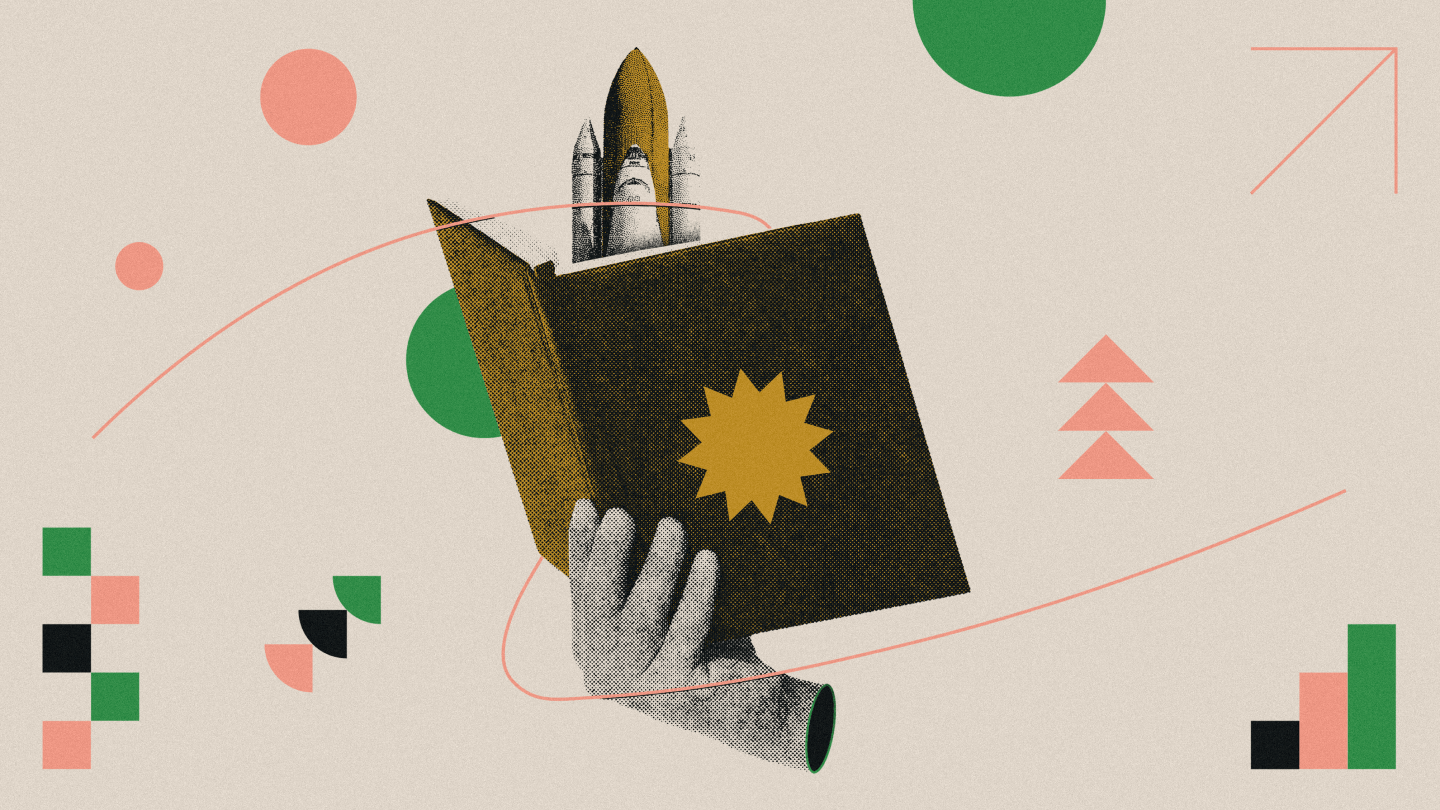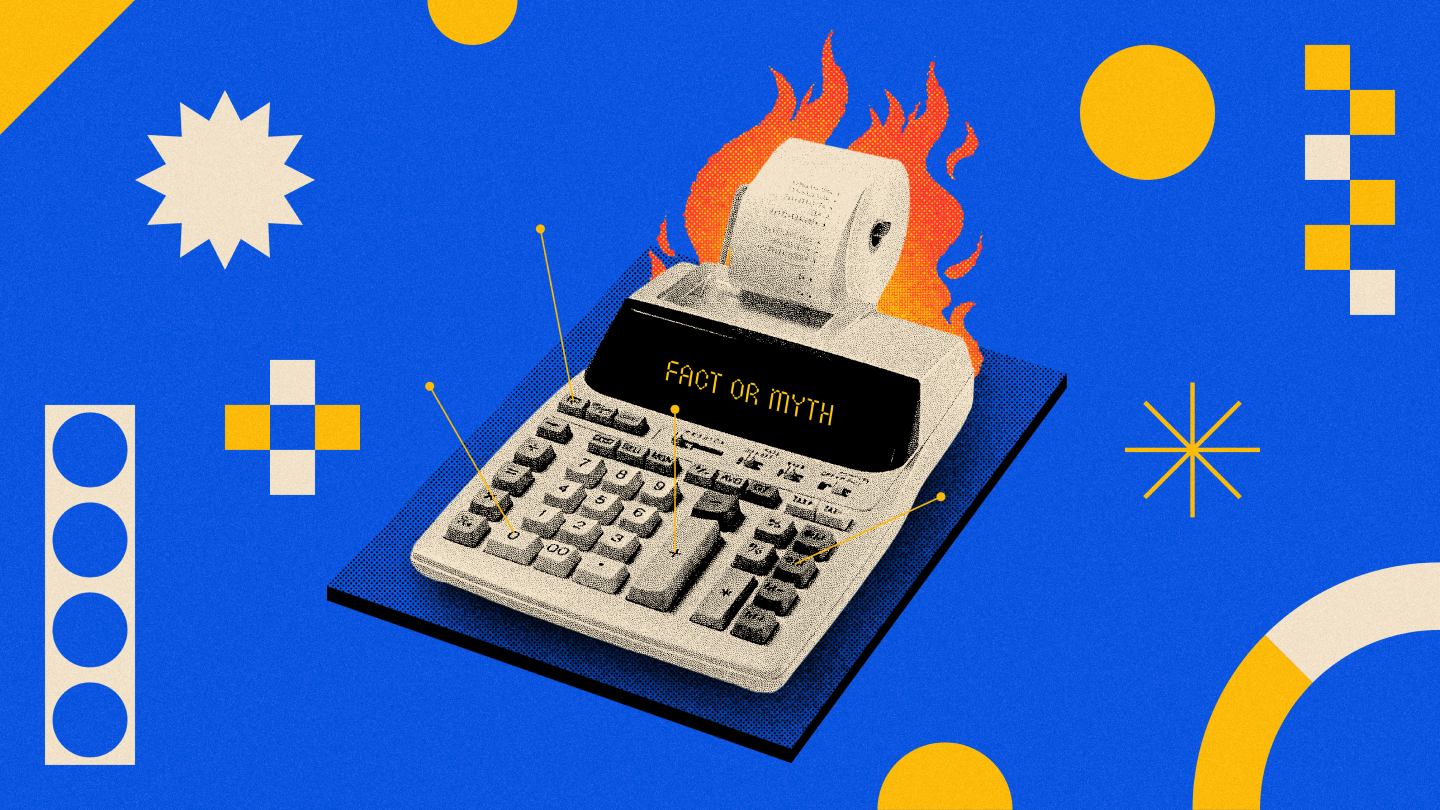Welcome to our ultimate credit card guide. If you’re reading this, chances are you have a few questions about how credit cards work. Whether you’re a student, new to Canada, or just trying to get your finances in order, this article is a great place to start.
Credit cards are a convenient way to pay for everyday things, earn rewards, and build your credit. They’re also something that most of us take for granted in this modern, tech-driven world. The invention of the small molded piece of plastic known as the credit card has completely transformed the world we live in, and had an immeasurable impact on the global economic system.
Before the advent of today's credit cards, people would save their money until they had enough to make a purchase (imagine that). Some of you will remember the “old days” when you needed to have cash on hand, or funds in your chequing account to buy groceries, gas, clothing, or other goods.
This process was similar for other situations in life, such as travel. If you went backpacking in another country, or on a family vacation, you carried Traveller’s Cheques. Today, these types of practices are far less common. The creation of the credit card has forever changed the way we spend.
Credit card fact: the average Canadian carries at least two credit cards
Credit Cards 101: a brief history lesson
The concept of credit dates as far back as 5,000 years ago to ancient Mesopotamia. Clay tablets from that time period show records of credit existing in trades between merchants, and are among the earliest known evidence of people buying something in the moment, but not paying for it until later.
Fast forward a few millennia to the twentieth century. Before credit cards came around, the average consumer could only dream of the affluent lifestyle that very few individuals in the world enjoyed. This all changed when credit cards exploded onto the world markets in the latter half of the century, enabling people to buy outside of their means.
In 1950, the first widely used credit card was invented after Frank McNamara left his wallet at home while dining out in New York City. This experience inspired him to create the Diners Club card. Customers who held the card would use it to pay for their meal, and the restaurant would send the bill to the Diners Club.
The Diners Club would then send payment directly to the restaurant’s bank after taking a small commission for the transaction. Patrons with the card would be required to pay their bill each month to the Diners Club.
By the 1990s, less than 50 years after the birth of the modern credit card, there were more than 450 million credit cards in North America alone. Today, consumers have unprecedented access to goods from across the globe with the swipe (or tap) of a card.
First things first: how do credit cards function?
We want to make these next few sections easy to understand so that they are as helpful as possible. This is where we will go over some of the most basic details about credit cards. Feel free to scroll or skip past particular sections if you already know the fundamentals. For those that don’t, this section is for you.
What is a Credit Card?
Credit cards are issued by a creditor that allows the cardholder to pay for goods or services on credit. It essentially provides you with a short-term loan. Here’s a brief rundown of how they function:
You make purchases with a credit card, which in its most basic form is an IOU to the creditor, and it’s your responsibility to pay the company back. Each month you receive a bill with your purchases and how much you owe. If you pay the whole amount owing by the due date then there is no interest. If you only make the minimum payment then you will be charged interest.
You can use your credit card for various types of transactions, such as point of sale (like at the grocery store), over the phone, or online. Cash advances are another service provided by most credit card companies. They allow cardholders to withdraw cash through an ATM, at a bank, or via cheques. Cash advances typically have a fee for the withdrawal and they incur higher interest than everyday purchases.
Why do Credit Cards expire?
Those four little numbers on your card are responsible for a lot more than you might expect. Credit card companies use expiry dates for three main reasons: fraud prevention, security & technology, and upkeep.
Fraud prevention
The expiry date is an added data point that needs to be confirmed, and if it can’t be, it’s a red flag to stop the transaction and report for fraud. Without expiry and CVC, people could just guess various 16-digit numbers until one went through. The expiry date is just a way to ensure your card stays secure.
Security and technology
Do you remember when debit and credit cards first got tap as a feature? You either had to go to your bank for a new card, or wait until your card expired to get a new one with tap. As credit card features continue to evolve with modern technology and upgraded security, your card needs to be replaced over time to keep it current.
Upkeep
The last (and one of the most simple) reasons that your credit card has an expiry date is to maintain your credit card’s integrity. Over time, the magnetic stripe or chips can become less sensitive, impacting your card’s performance. Rather than having your card slowly decay to the point of looking like an abandoned Blockbuster card, your credit card is renewed every couple of years to keep it fully functional.
Credit card numbers and what they mean
There is a 16-digit number on your credit card. The first 6 numbers are called a BIN (Bank Indicator Number) where the first number represents the type of credit card and the next 5 identify the card issuer. Mastercard’s starts with the number 5 and Visas begins with 4. For example the first 6 digits of a Neo Mastercard are 5253 51XX XXXX XXXX, where the 5 signifies it’s a Mastercard and the other 5 numbers signify Neo Financial as the creditor. The remaining numbers are your individual account number, with the final digit being a validator as a further measure against fraud.
(Credit card numbers graphically represented)
What is a CVC (Card Verification Code) or CVV (Card Verification Value)?
The CVC or CVV is the 3 digit number found on your credit card. It’s also referred to as the security code. The 2 different acronyms are interchangeable and differ depending on your credit card service provider (Mastercard or Visa, respectively).
Your CVC is typically located on the back of your card, next to your signature. It’s used by the merchant as an extra security measure to verify that you are the cardholder when verification with a pin code or signature is not available.
The two main types of credit cards
Standard Credit Cards vs. Secured Credit Cards
At the end of the day, the card that works best for you will largely depend on your unique financial situation. But what exactly is the difference between them?
Standard credit cards
Standard credit cards are often referred to as unsecured credit cards, and when people talk about credit cards, that’s usually what they mean. They do not require a security deposit and typically have better rewards programs, and lower interest rates. They provide the financial flexibility to make almost any purchase online, or cover emergency costs when you’re in a pinch. You can also build your credit fast with an unsecured card. Some Standard credit cards offer insurances, such as fraud, theft, or travel.
Secured credit cards
Sometimes referred to simply as a secured card, it’s very similar to a standard credit card, as your limit, balance and payment history are reported to the credit bureaus. With these cards you’ll need to put down a security deposit equal to the credit limit amount you want. If the individual fails to make payments on the account and it is closed, rather than going through a collections agency, the security deposit is used to pay off the balance. In the event that someone has their balance paid off and the account is just closed, then the security deposit is paid back to the individual.
Understanding credit card limits
Every credit card comes with a limit, which is the maximum amount you can spend (or borrow) on your credit card. These limits vary considerably from person to person. Not everyone has the same access to credit as credit limits are typically aligned with your credit score, so the higher the score the higher the limit.
Your credit card issuer evaluates several factors when they assign your credit limit. The following is a list of the most important elements:
- Your credit score
- Your total income
- Your approximate expenses
- Your current debt
- The number of your recent credit applications
- Your employment status
It’s important to remember that the criteria used by credit card companies to determine your access to credit varies greatly from lender to lender. Different creditors use their own unique statistical models to accurately assess the risk associated with lending, which ultimately determines your credit limit.
What credit card limit can you expect as a beginner?
If this is the first time you’ve ever had a credit card, and don’t have much credit history to speak of, the credit card companies will view you as something of a risk. For that reason, you will likely be given a limit of somewhere between $500 and $2,000. You might have family or friends with limits of $10,000 or more—don’t despair! Your limit will go up over time as you make your payments on-time and continue to grow your credit.
So what’s the average credit card limit in Canada? It’s a little tricky to pinpoint the average credit limit for Canadians, as there are many variables to consider. In addition, financial institutions don’t often release this type of information to the public, so it’s tough to get precise statistics on the matter. However, there is a Bank of Canada survey that gives people some very helpful information.
According to the survey, 41% of Canadians have a limit of at least $10,000 and 15% have access to under $2,000 on their credit cards. The findings indicate that a large percentage of Canadians have relatively ample access to credit through their credit card lenders.
76.2 million Visas and Mastercards are in circulation in Canada.
How does credit card interest work in Canada?
This seems like a very simple concept, right? You borrow money with your credit card, and if you don’t pay it back, you get charged interest. But there are other factors that make it a little more complicated.
For instance, what if you pay a portion of it back? Does that impact how the interest is calculated? Are new purchases you make going to accumulate interest immediately? We’re going to explain how credit card interest works in Canada so that you can begin to make better choices with your finances.
Understanding average interest rates
Interest is usually presented as an annual number or fee for the privilege of spending money now that you would normally have to save for. The average rate of interest for a credit card in Canada is roughly 19%, with many as high as 29%, however there are also low rate interest credit cards you can get that charge an annual fee.
70% of Canadians pay their credit card balance in full each month, so for them the interest rate is zero
Minimum credit card payments
The minimum payment is the smallest amount that you can pay every month without incurring late fees or negatively impacting your credit score. Your minimum payment is largely allocated to pay off interest charges, and the remaining amount is applied to the amount you borrowed originally (also known as the principal). Making your minimum payment each month will keep your card in good standing and help you protect your credit rating, but it will not pay off any of the balance owing anytime soon.
Understanding your credit card statement
Reading your credit card statement each month is very important. If you’re trying to follow a budget or track your expenses, this is critical. You’ll also need to be on top of your statement if you want to ensure all of your charges are correct each month. Credit card issuers are also required by law to show on your statement how much time it is going to take to pay off your balance if you pay only the minimum balance.
Your statement may seem a little confusing, which makes it tempting to quickly glance at it and move on, but don’t do this! You should take the time to read through it carefully. It will help you to understand all of the terminology that is included in your statement.
The following is a list of 9 terms you’ll find on your credit card statement and what they mean:
- Statement date: the date that your statement was issued, which marks the end of your last billing period, and the start of the new one.
- Payment due date: this is the date by which your credit card company has to receive your minimum monthly payment by.
- Credit limit: this is the total limit you can borrow on your card.
- Credit available: the amount of credit you have remaining on your card after your new charges and past balance have been subtracted.
- Minimum payment due: this is the minimum amount you have to pay each month (if you are not paying the full amount).
- Previous balance: how much you owed at the end of the last billing period, not including any new payments.
- New balance: this amount is your previous balance as well as any new charges and late fees (minus any payments or transactions).
- Periodic rate: the annual percentage rate that will be applied to your credit card if you have a card with a variable interest rate.
- Annual percentage rate: this is the interest rate you are charged on credit card purchases and cash advances, but expressed as an annual rate.
Again, take the time to check your statement in detail. This will help you find mistakes, and also enable you to detect fraud. If you find an error or a transaction that you don’t recognize, make sure you contact your credit card issuer immediately.
Building credit with a credit card
It’s pretty tricky to get a loan, credit card, or sometimes even an apartment if you don’t have any credit history. But how do you create a record of responsible payments if nobody is willing to offer you credit in the first place? If you’re building your credit from scratch you’ll likely have to begin with a credit card.
Your first credit card will likely extend you a small credit limit as you prove your creditworthiness. You can learn more about building credit in 5 simple ways to build your credit score and how to avoid damaging it. But in the meantime, here’s the basics on how your credit card can help you build credit.
Establish a payment history: you will start to show responsible use of credit through making minimum payments or paying off balances in full. Develop credit history length: the more history you have as a borrower, the easier it is for lenders to evaluate you. Start building up your history sooner rather than later. Monitor your credit utilization: get in the habit of monitoring your credit utilization. Maintaining a low utilization shows you are a responsible borrower. Learn more about credit utilization.
There are other factors that impact your score, like the types of credit products you have, reducing excessive hard credit checks, and being mindful of unnecessary debt. That being said, building your credit takes time.
Learn more about credit utilization.
How to apply for a credit card
These days applying for a credit card is very straightforward, but there are a few things that you really have to know.
When applying for a Canadian credit card you must have the following:
- Full legal name: your surname, middle name and given name.
- Current and previous addresses: this will be where you currently reside, how long you have lived there, and potentially, your past addresses.
- Identification number: make sure you have the identification you need such as a Driver’s License and be prepared to show documents or send digital copies.
- Employment details: this will include your current employer, along with their address and contact info, as well as the length of time you’ve worked there.
- Income information: your annual salary or hourly wage.
Some creditors, such as Neo, allow a fully digital application process where you can have access to your card in minutes, others require you to go into a branch. If you’re going into a bank, you’ll need to bring your original ID and supporting documents. Once you have submitted your application, a computer will run your information through a complex algorithm. Using a mathematical formula, your application will either be approved or declined. If you’re approved, your credit limit will be determined as well.
Final thoughts: find a credit card that works for you
At the end of the day, you’ll want to choose a credit card that fits your lifestyle and needs. So what are some key things to look out for in a credit card? We recommend looking for something with no annual fee, low interest (though the interest rate doesn’t matter if you’re paying your balance in full), credit score monitoring, and rewards or cashback that work for you.
Credit card rewards come in lots of shapes and sizes. There are essentials, as well as travel, cashback, and even brand-specific rewards. We can’t tell you what your perfect credit card is, it’s up to you to decide what’s important.
Legal: This article provides information and is not intended to provide any personalized tax, investment, financial, or legal advice. You are encouraged to seek professional advice before making financial decisions.



